Q&A: YES Men At Bat in Commemorating RSN's 10th Anniversary
Ten years ago today, the YES Network threw out its first pitch to viewers. Over the past decade, the channel that George Steinbrenner built has put regional sports on the same playing field as traditional entertainment channels. Innovative original documentaries, live studio shows and series programming built around live New York Yankees baseball and New Jersey Nets basketball games are hallmarks of the 24-hour local sports service.
YES was the first regional sports network to pitch several technological advances, including live HD telecasts; interactive TV with various field camera angles and player cams; live game 3D baseball telecasts; live game streaming on the Web; and national distribution of its signal (sans live games) outside of the New York DMA. It also manage to not only survive but thrive despite not being carried by key New York distributor Cablevision Systems during its rookie year.
Fans may love it, but critics cite YES in the highly charged debate over sports-network. rights fees. Its license fee - estimated by SNL Kagan at about $2.80 per subscriber per month - has become a rallying cry for operators bemoaning the high cost of sports programming.
Multichannel News programming editor R. Thomas Umstead and Multichannel.com news editor Mike Reynolds sat down with YES CEO Tracy Dolgin and chief operating officer Ray Hopkins to discuss the network's 10th anniversary, as well as what the field of dreams for regional sports networks will look like in the future.
Multichannel News: When YES launched as the first independently team-owned, basic regional sports network did you foresee the leadership role that the network would take in shaping the sports TV landscape?
Tracy Dolgin: Ray and I were at Fox [when the network launched] and we saw YES as an enormous threat to our business model. You have the best team in the world basically taking out the middleman and controlling their own destiny and controlling their own branding. And, more importantly, taking the economics for themselves and cutting out the middle guy. We saw it as a huge challenge.

I, myself, had tremendous doubts that it was going to work and not because it wasn't a great idea but from an execution standpoint. Secondly, everybody forgets that about [YES'] rough start. It was more than a rough start; Cablevision in New York had all the teams and sports were the centerpiece of Cablevision's strategy here. When the biggest distributor has all the teams on its own networks, and you take one or two of them away from them it's not so simple. Nor is then having to go back and get distribution from the same guy that you've just taken their teams away from. And I can understand from their point of view why that was a little bit of a blow.
So we thought it was a great idea, it was a scary idea, and then we also thought it's going to be tough to see whether they make it.
MCN: What impact did YES have initially on the regional sports business?
TD: I think what we saw in those first three years before Ray and I got here was they did an amazing job from a dead start. If you look at this ten-year period of time, there have been firsts after firsts after firsts with YES. Think about what regional sports networks were like at the beginning, before YES.
Multichannel Newsletter
The smarter way to stay on top of the multichannel video marketplace. Sign up below.
Most regional sports networks in the United States were sort of shoddy game production; they didn't even have all the games -- most of the games weren't broadcast.
There was no backdrop programming. The backdrop programming they had certainly before Fox Sports Net was mostly hunting and fishing kind of shows or they just weren't on at all. A lot of the networks were part time. YES changed all of that.
I'm not sure you would have had the NFL Network or the MLB Network or the NBA TV without YES. I'm not sure you would've had any of these things where the concept was that the content owner would have a branding piece and maybe an equity piece of it but certainly a branding piece of that sports property. I'm not sure any of those would have happened had YES not happened or been successful.
So the business has developed really quickly and now, looking into this new world that we're going to face going forward, RSNs that are going to be the most important thing in that development. I mean if you're a cable distributor or a telco company you say to yourself, ‘What is the must-have that's going to prevent people from cutting the cord or going to make people get cable as opposed to getting their telco service?
You have to list the quality of that programming. It has to be live programming. It has to be available no place else, and it has to be stuff that people are passionate about and not available any place else.
So the only product that really is must-see and passionate and live is sports, and the passion part really comes from the local side, not the national side. And to some degree the way they do news now fits that bill also. Whether it's CNBC or whether it's Fox News or whatever. But so going forward as the cable industry grows, it has to be regional sports that lead the way on that. Without regional sports networks, I'm not sure you could've ever gotten from fifty percent distribution on cable to the 90 percent-plus that you have now.

When you can define yourself by what you watch, YES was a social media platform before the concept of social media. Because what is the YES Network? It is a community of a lot people who love and whose lives revolve around the Yankees. So what does that mean? You produce the games from a fan point of view for a homer and there's no problem being a homer. We root. If the Yankees lose, it's a different vibe on our air as when they win.
You're a homer, the product is built for people from that point of view so all the product comes around from the Yankees and now the Nets and hopefully the Nets moving to Brooklyn is going to add another layer to our network.
It's not a TV show. It's part of people's lives and that's how this network has gotten where it is over ten years. Ray and I have come in and hopefully put the skin around it.
And just like the Yankees, by the way, this network has the exact same philosophy. It was born under the Yankees, Goldman Sachs and the Nets and.. But it was born with this Yankee philosophy is that you take whatever you get and you invest it back into the business.
There was an article about the Yankees payroll, that (owner Hal Steinbrenner) really wants to get the payroll down to $189 million. Where else would that be a story? That's an issue. And he pointed out that would still make us obviously up there at the top of the league.
But they invest back every dollar that they make, it goes right back into the team and the stadium and the brand. And it's the same philosophy here. We invest back into being No. 1 even if it sometimes doesn't make economic sense, you know. The 3D games didn't make economic sense. But we had to do it because you're the YES Network and you've got the right brand.
MCN: When we talk about the passion that sports creates for its fans, there is also a different passion about sports networks on the cable operator side relative to sports rights costs, and YES itself has drummed up a lot of that passion. Are we at a point where the value of sports networks is equal to the cost?
TD: No, you're not at a point. And I'm not saying that we don't get a healthy affiliate fee. But the value of sports is growing. I mean the technology is gonna force that issue.
When you take an ad out on the Super Bowl, people aren't thinking about that on a cost per thousand basis. They're thinking about the Super Bowl as one of the few places you can go if you want a mass audience, where everybody is watching at the same time and where people are glued to the TV set -- not just during the game but during commercial breaks -- and you think of that versus any other thing on television. The math does not pencil out the $3 million to $4 million that they're getting for an ad. But if you actually think of what their purpose for it is and the value that they're driving, it obviously must pencil out because a lot of really smart people are buying it.
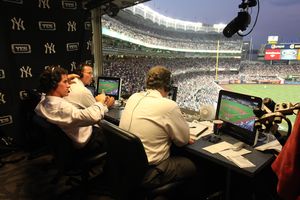
So I think the answer is the price that we get is set by a free market and they're not paying it unless there's that value. In the early days of cable, it was the MTVs of the world and obviously the HBOs. Now it's really sports. It's live. It's current, it's passionate. And so I think the value equation of what sports means to the distributor's business is growing, it's not shrinking.
Now if you ask me where are they going to get the money from, the answer is pretty simple. The money is going to come from those other 280 channels. This is not denigrating the 300-channel landscape is right now, but I think in the world of TV everywhere, if you ask a cable operator what's going to be on TV everywhere in the long run its going to be live, 24-hour networks, and it's going to be sports and news.
The amount of money you pay for expanded basic is a bargain. And when you add on top of it TV Everywhere, the ability to watch it anytime, anyplace on any device that you want, it is the single greatest bargain in the history of the media or the entertainment business. And so I don't think it's overpriced, I think it's a bargain. There's just more and more of it and better ways to do it.
Ray Hopkins: I think that business model has served the industry very well and ultimately has served the end users very well in terms of the choice and the diversity that it's been able to offer. I mean God forbid we were ever to go to an a la carte model, because ultimately what you're going to have is people paying virtually the same amount of money but for less choice.
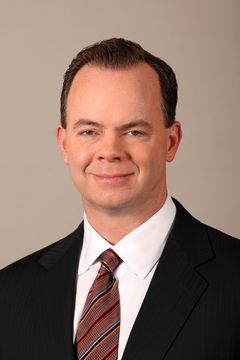
TD: Ray is making is a great point. It's even beyond that. People always say ‘I only watch 14 networks.' First of all, people, for the most part, don't watch networks.
YES is different because it's a family brand, so to speak. You turn to YES because you're a Yankee fan and you want to see what's going on. Even if it's off-season, you want to see what's going on. Most networks aren't watched that way. Most networks are watched by a program, a program-by-program basis. Right?
You're just picking the fourteen networks where your fourteen favorite shows happen to be at that particular point in time. Five years ago literally no one would have put AMC on their list. AMC was a good channel, but it old movies and "Godfather" week. Now, the three hottest shows on TV might be on AMC.
RH: Right.
TD: So that's why expanded basic works because it gives you this ultimate choice and the choice changes based on people's creative ability and the financial wherewithal to do it and the ability, by the way, to order a show like Mad Men. You need a real solid business model to order a show like that. That show is more expensive than network television used to be back in the day.
So people always want things cheaper and they say that things are too expensive. If you price something cheap, at zero, I think the print business showed us that was a really good business model. Right? Let's put out something and don't charge for it and see if people value it. It took the consumer print business to a non-business model. And I think TV Everywhere is part of the answer because the music business went the other way. The music business basically said we're not going to allow people to consume it the way they want to consume it and we're going to hold our old distribution model over your head and we're just not going to change with where you want to do it
People don't want to steal. If you talk to any music executive, if they had sold to iTunes before the Napster days, if they had created that digital business model before those days where people were stealing it and there was crappy quality, people never would've got in the habit of stealing that. And then after they do it, it's not stealing anymore. You can't go back at that point.
MCN: How successful has YES' TV Everywhere product been?
RH: I think on the authentication standpoint, it's gone very well. It's gone seamlessly, because going into it, no one had done authentication. I mean we don't get into the exact numbers. I would say that the product is, interestingly, has probably performed better than our distributors thought it would perform but I think it would be fair to say probably not at the levels that we internally thought it would be at. So it would be somewhere in between.
We're going to be rolling it out for this season and we'll do it next season as well. And then at that point we'll kind of step back and take a look at, you know, with [Major League Baseball Advanced Media] where are things, how has the technology advanced, and how can we further make this a better product going forward.
We were the first ones to do a deal with Major League Baseball Advanced Media...We tried to break the logjam to advance our efforts with broadband. But we've also done 3D television.
We don't know where these initiatives are ultimately going to take us, but with the leading product and content like the Yankees, we have the advantage of putting our foot in the pool first with the distributors and finding out where it's going to go. I mean in this case I think that it's been met with moderate success
.
MCN: You mentioned the development of YES Network and how everyone else has followed the network. You now have the Lakers channnels, you've got the Longhorns Network. Are there too many stand-alone regionals out there now? Has that trend now gotten to the point where it's a negative and hurts the regional sports network business?
TD: Well let's put it this way: Not all content is created equally, not all regional content is created equally and not all teams are created equally. So just because it worked for us, there are teams and networks it didn't work for.
It's got to be a big market, I think, or a big product and it has to be the strongest brand in that market. The Lakers are going to be interesting -- you're launching with 50 basketball games but it's a strong brand. It's the Lakers. So I'm sure that will work, but it's not for the faint of heart. What people don't understand is it's not a guarantee and you are taking a risk.
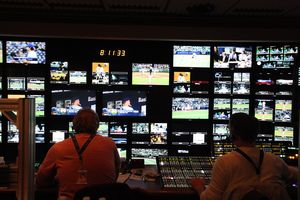
RH: Yeah. In terms of the teams it did not work for, the Kansas City Royals, the Minnesota Twins, you had the Portland Trailblazers it didn't work for. It didn't work for ESPN West when they tried to launch it with -
MCN: The Anaheim Ducks.
TD: The Ducks and the Angels. What people don't understand is it's not a guarantee and you are taking a risk. It's much easier just to take a media rights payment than it is to own a regional sports network or to own part of a regional sports network.
And again I don't want to sound like the Republican debate, but isn't that really what it's all about? It's risk/reward. You cannot succeed at the level of the YES Network or one of these other networks without taking a chance. The easiest thing is to just take a check, you know how much it's going to be for the next ten years and you plan your business that way.
RH: I think in terms of the model, to take a check is the safest route. The next one would be to start a regional sports network and then partner with a distributor. And then the third is going out on your own with a financial partner that's not the distributor.
MCN: Do you think that the second level that you just described is that where most of the business is going to go?
RH: Certainly I don't think in all cases but that's where it's trending with Comcast over the years and now you've seen Time Warner Cable get into the fray here in New York with SNY and with the Lakers networks. So I think certainly teams that are in Time Warner Cable-dominated marketplaces now look at Time Warner as one of those partners to start a regional sports network with.
The market size is so important because you ultimately need to get the subscriber fees and the ad sales obviously to follow in large markets to monetize these meteoric fees. And so to do it in a small market is difficult.
MCN: Interesting. What should we expect from the YES Network going forward on the technological side?
TD: Well two things come to mind right away. Number one, the next three years probably are going to be the birth of TV Everywhere. So you're going to put mobility and device-agnostic into the vocabulary because that's the way people are starting to consume the product. Convergence has happened.
Coming off that convergence it's going to give you capabilities, no matter what device you use to enrich your experience. Right now all you've done is shrunk your experience so to speak. People always say why would anybody watch a Yankee game on a phone if they could watch it on a 52-inch TV?
The answer is the Yankees are your primary viewing target. We're not like another show where you're multi-tasking and your primary thing is what your multi-task is. It's like you're watching a Seinfeld rerun where I'm chatting as opposed to watching. So we're probably always on the big screen. But most networks can't say that.
What I see is a multi-screen experience, a community experience while watching a game. What I'd love to do is I'd love to watch my 52- inch screen and even if I'm not in the same room as all the Yankee fans, I'd like to be sitting there talking to other Yankee fans and communicating and sharing the energy of the stadium with other Yankee fans or rooting and trash talking the Red Sox fans or Mets fans or whoever we happen to be playing at the time.
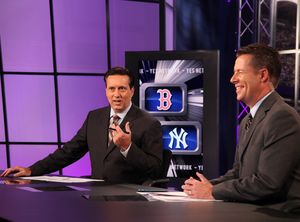
To have that all on one screen with video and voice, you know, I could see that as a potential fixture. Technology has got to catch up with that. But it's definitely better on one screen that two screens if you can technologically do it. Because I'm telling you, chatting on your iPad while watching the game is distracting, as opposed to doing it on one screen.
The best experience in the world is being at Yankee Stadium, right? There's just no question about it. I would rather go to a Yankee game at Yankee Stadium than watch it on TV. There's some sports that I don't really feel that. Actually, I would rather be watching on Fox the Green Bay Packers than be at Lambeau Field in the freezing cold. You can't see when you're there, you're looking at the screen anyway. It's great to do occasionally because it's a once in a lifetime thing, but I'm not sure in December it's as good as watching on my big screen TV.
But with baseball I would say it's better being at Yankee Stadium. So to me there's a place in between.So we're a community, right? So with our product, it makes sense. It does not make sense to watch Sons of Anarchy in a community experience. That is a lean-back experience. It's a great show, you're watching the story, you don't want to be pulling up anything while you're watching it, you don't want to talk to your friends. You want everybody to shut up. It's like being in a movie. That's what you want.
But we're different. YES Network was a community the day we started it and before there was social media. That's the next step.
RH: You're starting to see that evolve with the tweeting viewpoint.. We're seeing that even with the MyYES online in terms of the usage of the YESNetwork.com. It certainly spikes during a Yankee game. We're up 126% this year in terms of usage on the network.
TD: People think that's a slow growth part of the industry, which is web usage. And we're up 126% so I guess it's not that slow.
RH: I mean our network is unrivaled, our website is unrivaled on any regional sports network in the country. But, you know, obviously we have the network thing, we can make the same statement, but the website follows suit as well.
So I think to Tracy's point, I mean that communal experience is certainly there and that's what sports is all about and that's why people watch sports live, because they want that experience. They want to be able to share that feeling when it happened. In a weird way with sports fans.as you're watching it live, you feel like you have an impact over what's taking place in the game just because of the way you're sitting or the jersey that you're wearing in that particular instance.
MCN: What are the biggest issues facing the regional sports network going forward?
TD: I guess we all have to keep the industry healthy. It's really an industry issue. So goes the industry, so goes the regional sports networks. And again, I see bright skies versus clouds on this because I think we're the only industry in the media business that reacted to this convergence proactively; coming up with a solution to it and giving people a reason to want to do it.
So I think the direction that people are going with TV Everywhere, they've got a lot to figure out. They have to figure out the technology. They have to figure out the authentication, and Nielsen has to figure out how to count how many people are watching the YES Network on an iPad or a phone or a Droid or whatever they're using. So that has to happen.
But I think my number one concern would be to make sure that we're all doing it. Sometimes when people do deals with people for extra income and give their product to a competing, over the top service, I just shake my head. I'm thinking `where are you making your money?' It's short-sighted, but some businesses don't have long-term futures and they manage quarter to quarter to quarter. We wouldn't do a short-sighted deal like that.
We have to keep our eye on the ball to make sure that everybody stays healthy and everybody cooperates as partners.
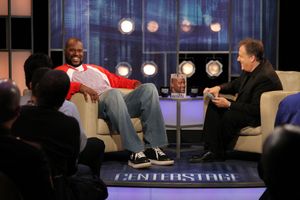
RH: I think that that's exactly right. I would also think that in terms of issues...To the point you just elaborated on, I want to add home viewing to TV Everywhere. I mean Neilsen is going to need to come to the party and really be able to measure the usage, whether it's in the home on an alternate device or outside the home.
Today, speaking from a regional sports network standpoint, they are not able to do that, nor does there appear to be a solution for that in the near future. And that's going be critical because we are... I don't think anyone, any content provider is going to be comfortable in terms of licensing their content in that environment...and potentially take away from the linear experience and then not be able to get the rating associated with that viewing especially on the sports side. So we hope that Neilson is able to ultimately measure this, not only on a national basis, but on a local one as well.
TD: One of my concerns is that the things that we need to do the things right for the health of this business, some of the key pieces are not in our control and it's frustrating. You would think there's business there, but it's frustrating.
MCN: Speaking of advertising, are you selling tenth anniversary packages? Does that milestone make a difference on Madison Avenue?
TD: We're going to do some tenth anniversary vignettes for the year. But seriously, the people that advertise with us, the number one thing on this network are the Yankee games. That drives the ad sales of this network. Last year was the best we ever had for the Yankees.
Literally every meeting we've had with the advertising community-- and we sell mostly on a sponsorship basis -- has been a plus for this year. The auto category is roaring back.
The domestic auto industry and the Japanese have come back from the tsunami and disaster strong. So that drives the sports business. The car business is the first thing that drives the sports business
So we're going to set a record this year. We have already sold more for spring training than we ran last year. And last year was the highest we ever did for spring training on the YES Network. I mean there is almost no doubt in my mind, unless something happens that's unforeseen --we didn't foresee the tsunami last year - that this is going to be a record year. And I'm not sure everybody is having a record year, but I think we're going to have a record year.
